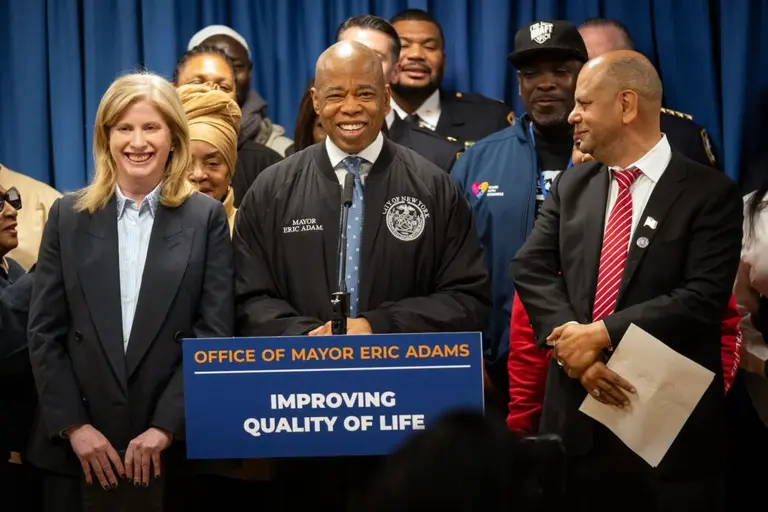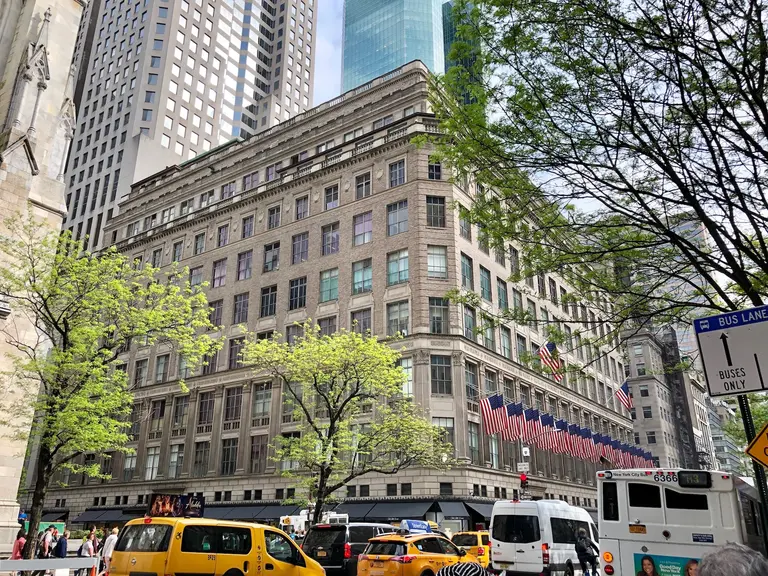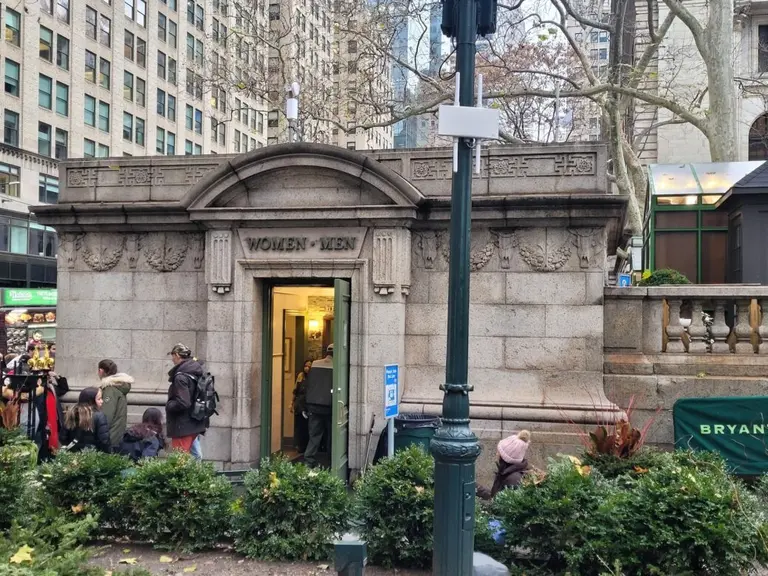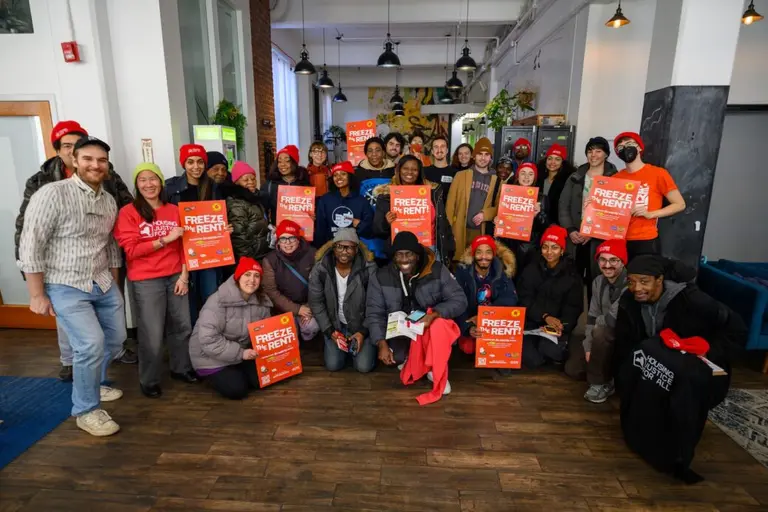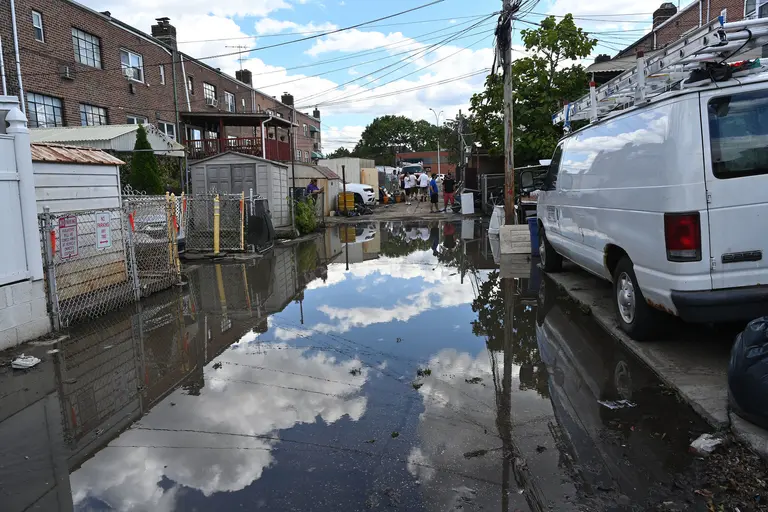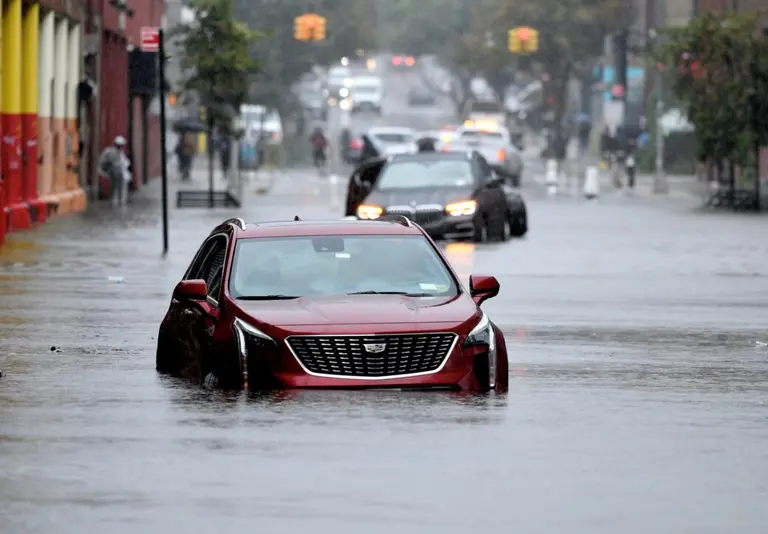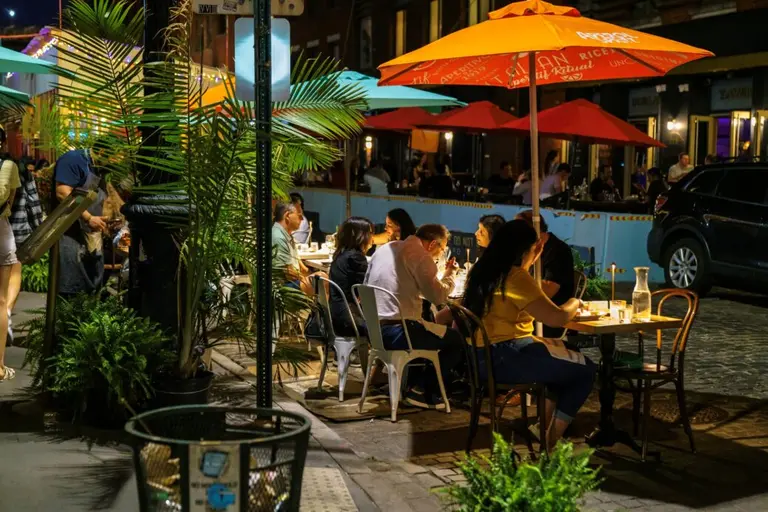Here’s what New Yorkers can expect from Joe Biden’s COVID-19 plan
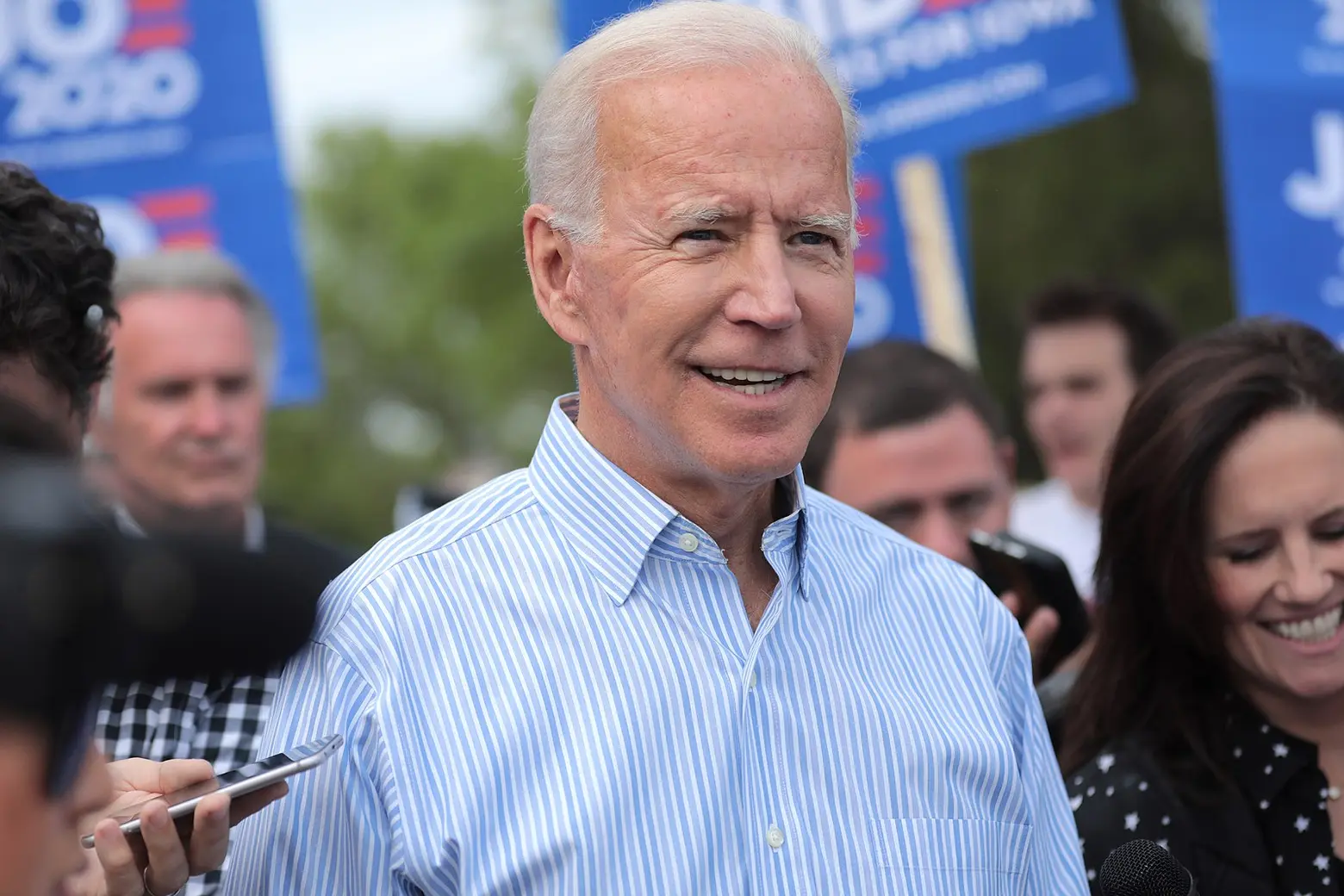
Photo by Gage Skidmore via Wikimedia Commons
Even before he was officially declared President-elect, Joe Biden began briefings about the pandemic, and since Saturday’s celebrations, his comprehensive, federally led strategy to combat COVID-19 finally feels within reach. Today, President-elect Biden announced the 13 members of his COVID-19 advisory board, made up of public health experts, scientists, and doctors. This group will help Vice President-elect Kamala Harris and him carry out their plan to not only beat the virus, but to prepare for future global health threats. Ahead, we take a closer look at the intricacies of the strategy and how it will benefit the entire nation, as well as New Yorkers, from a nation-wide mask mandate to an increase in testing centers to the establishment of a Racial and Ethnic Disparities Task Force.
On Friday, President-elect Biden said, “The pandemic is getting significantly more worrisome all across the country. I want everyone to know on day one, we’re going to put our plan to control this virus into action.” This is why his transition website, buildbackbetter.com, has already laid out a seven-point plan to beat COVID-19.
All aspects of the plan will be governed by three main philosophies:
- Listen to science
- Ensure public health decisions are informed by public health professionals
- Promote trust, transparency, common purpose, and accountability in our government
This is also why the COVID-19 Advisory Board was assembled and announced today. “The advisory board will help shape my approach to managing the surge in reported infections; ensuring vaccines are safe, effective, and distributed efficiently, equitably, and free; and protecting at-risk populations,” Biden said in a statement. In a briefing today, he said he will add additional members to the board as time goes on. The board will have three co-chairs:
- Dr. David Kessler, Professor of Pediatrics and Epidemiology and Biostatistics at UCSF. He also served as FDA Commissioner from 1990 to 1997.
- Dr. Vivek Murthy, the 19th Surgeon General of the United States from 2014-2017.
- Dr. Marcella Nunez-Smith, an Associate Professor of Internal Medicine, Public Health, and Management at Yale University and the Associate Dean for Health Equity Research at the Yale School of Medicine.
The rest of the board is made up of doctors and public health experts, many of whom have held previous White House positions, including Dr. Rick Bright, who has said that he was relieved of his duties by Donald Trump after he warned the administration early on about the pandemic.
A summary of the seven-point plan is broken down as follows:
1. Ensure all Americans have access to regular, reliable, and free testing.
- The plan seeks to double the number of drive-through testing sites across the country. It’s not known exactly how many of these sites there currently are, but an earlier version of Biden’s plan said that they would be “starting in large cities and rapidly expanding beyond” and that they’d also be setting up mobile testing centers, which would be pertinent in cities where most residents don’t own cars.
- Invest in next-generation testing, including at-home tests and instant tests. “A woman can go in and– to a drugstore and buy a pregnancy test, and find out at home whether or not she’s pregnant. We should be doing the same kind of investment to see whether we’re gonna have testing kits for people to know. It’s not enough to know in seven days or five days or three days whether or not you have COVID,” Biden said in a recent interview with CBS’ Norah O’Donnell.
- Set up a Pandemic Testing Board similar to FDR’s War Production Board. “It’s how we produced tanks, planes, uniforms, and supplies in record time, and it’s how we will produce and distribute tens of millions of tests,” says the website.
- Establish a U.S. Public Health Jobs Corps that would mobilize at least 100,000 Americans to engage in community-based contact-tracing.
2. Fix personal protective equipment (PPE) problems for good.
- The administration will fully use the Defense Production Act (a federal law enacted in 1950 that is defined by FEMA as “the primary source of presidential authorities to expedite and expand the supply of materials and services from the U.S. industrial base needed to promote the national defense.”) to ramp up production of masks, face shields, and other PPE. Donald Trump was criticized early on in the pandemic, especially by New York Governor Andrew Cuomo, for not invoking the DPA immediately to ramp up the production of PPE and testing equipment.
3. Provide clear, consistent, evidence-based guidance for how communities should navigate the pandemic – and the resources for schools, small businesses, and families to make it through.
- Similar to New York’s phased reopening and eventual cluster-zone strategy, under Biden’s plan, the CDC will “provide specific evidence-based guidance for how to turn the dial up or down relative to the level of risk and degree of viral spread in a community.” This will include “when to open or close certain businesses, bars, restaurants, and other spaces; when to open or close schools, and what steps they need to take to make classrooms and facilities safe; appropriate restrictions on size of gatherings; when to issue stay-at-home restrictions.”
- Establish a renewable fund for state and local governments to help prevent budget shortfalls that cause cuts to teachers and first responders.
- Call on Congress to pass an emergency package that “would ensure schools have the additional resources they need to adapt effectively to COVID-19.” For example, many New York City schools are currently investing in space heaters, as some classrooms must keep their windows open, as well as MERV-13 air filters, as Gothamist reports.
- Create a “restart package” for small businesses that would cover the costs of safety tools like PPE and plexiglass dividers.
4. Plan for the effective, equitable distribution of treatments and vaccines — because development isn’t enough if they aren’t effectively distributed.
Just today, Pfizer announced that its vaccine–which will be free to all Americans–is more than 90% effective in preventing COVID-19. In response, President-elect Biden said in a statement, “I congratulate the brilliant women and men who helped produce this breakthrough and to give us such cause for hope.” However, he also cautioned that “the battle against COVID-19 is still months away.” The original timeline predicted that the vaccine could be ready for distribution by late November, but even in this case, it would still be well into next year before a majority of the country received it.
“America is still losing over 1,000 people a day from COVID-19, and that number is rising–and will continue to get worse unless we make progress on masking and other immediate actions… Today’s announcement promises the chance to change that next year, but the tasks before us now remain the same,” he continued.
According to a story today in the New York Times, “Pfizer plans to ask the Food and Drug Administration for emergency authorization of the two-dose vaccine later this month,” and by the end of 2020, they will “have manufactured enough doses to immunize 15 to 20 million people.” At best, this would account for roughly 16 percent of the nation.
Despite a Tweet from Mike Pence claiming that the Pfizer vaccine was created as part of Operation Warp Speed–a public-private partnership established under the Trump Administration to meet the goal of producing and delivering 300 million doses of vaccines by January 2021–the company has said publicly that it did not take any federal money for research or development.
Biden’s plan for the vaccine could likely change slightly when Pfizer receives final approvals, but for now, it is as follows:
- Invest $25 billion in vaccine manufacturing and a distribution plan that will guarantee its availability to every American, cost-free.
- “Ensure that politics plays no role in determining the safety and efficacy of any vaccine.”
- Ensure that there is no price gouging as new drugs and therapies come to market.
In New York, Governor Cuomo previously laid out a vaccine distribution plan in which the vaccine would be distributed in five phases, with high-risk populations and essential workers prioritized. This plan, however, was developed at a time without federal oversight or communication.
5. Protect older Americans and others at high risk.
- As was proposed by Vice President-elect Harris, the new administration will establish a COVID-19 Racial and Ethnic Disparities Task Force “to provide recommendations and oversight on disparities in the public health and economic response.” When the current pandemic ends, the group will transition to a permanent Infectious Disease Racial Disparities Task Force. This approach is especially important to New York City, where the data confirms that the virus has hit people of color and low-income communities harder.
- Create the Nationwide Pandemic Dashboard so that Americans, especially those at a higher risk, can check in real-time the transmission rate in their zip codes.
6. Rebuild and expand defenses to predict, prevent, and mitigate pandemic threats, including those coming from China.
- Immediately restore the White House National Security Council Directorate for Global Health Security and Biodefense, which was established by the Obama-Biden administration.
- Immediately restore the nation’s relationship with the World Health Organization.
- Re-launch and strengthen the U.S. Agency for International Development’s pathogen-tracking program called PREDICT.
- Deploy additional CDC disease detectives and rebuild the office in Beijing.
7. Implement mask mandates nationwide by working with governors and mayors and by asking the American people to do what they do best: step up in a time of crisis.
- Every American will be asked to wear a mask when they are around people outside their household. “A mask is not a political statement, but it is a good way to start pulling the country together, “said Biden in his briefing today.
- Every Governor will be instructed to make that mandatory in their state.
- Local authorities will enforce their state orders.
To date, the nation has seen more than 9.3 million total coronavirus infections and more than 236,000 deaths. In his briefing today, President-elect Biden said, “I will spare no effort to turn this pandemic around once we’re sworn in on January 20th. To get our kids back to school safely, our businesses growing, and our economy running at full speed again. And to get an approved vaccine manufactured and distributed as quickly as possible to as many Americans as possible, free of charge. We’ll follow the science. We’ll follow the science, let me say that again. And we’ll adjust to new data when it comes in.”
